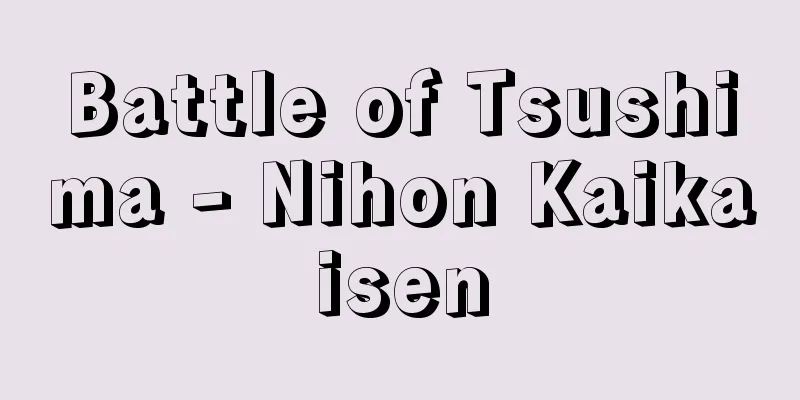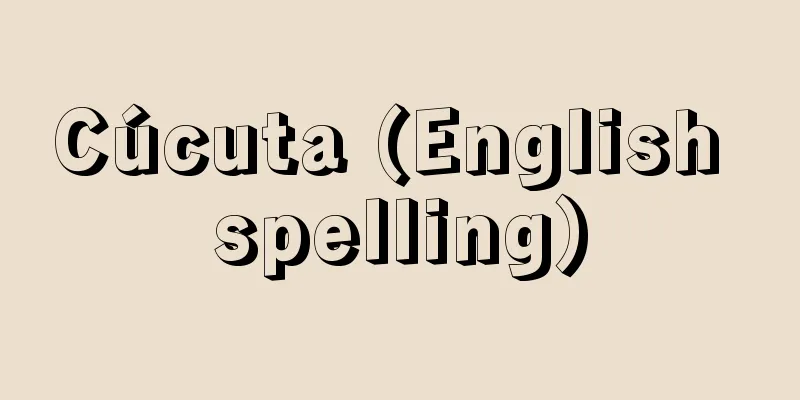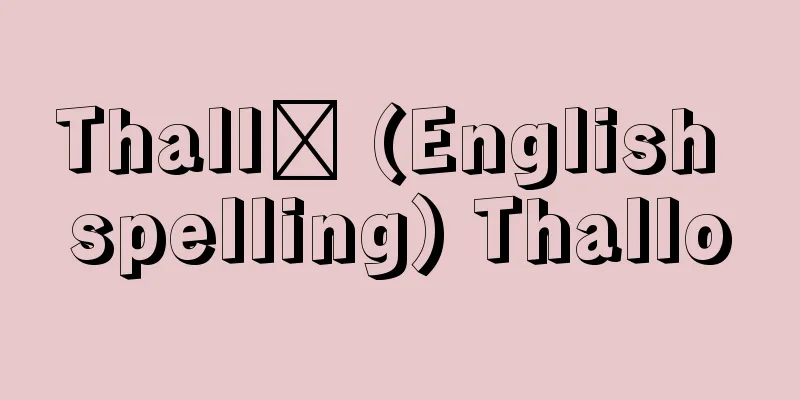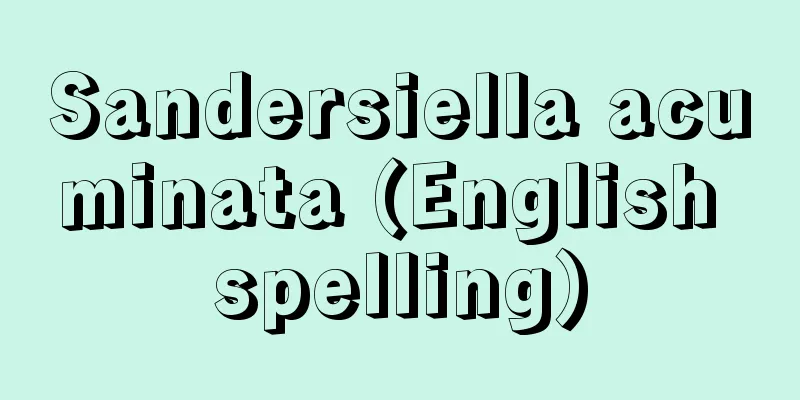Battle of Tsushima - Nihon Kaikaisen

|
From May 27 to the following day, 1905 (Meiji 38), the Combined Fleet under the command of Togo Heihachiro intercepted the Baltic Fleet led by Rozhestvensky off the coast of Tsushima, and this naval battle determined Japan's victory in the Russo-Japanese War. Russia decided to send the Baltic Fleet to the Far East as soon as the war began, and the fleet departed from the naval port of Libau in October 1904. If the fleet joined the Port Arthur fleet, the supply route of the Japanese forces in Manchuria would be threatened and they would be in danger, so the Japanese forces had to capture the Port Arthur fortress before the Baltic Fleet arrived. As a result of a disastrous attack that caused many casualties, they finally captured the fortress in January 1905, destroying the Port Arthur fleet. Although the significance of the expedition was largely lost, the Russian fleet of 38 ships, over 150,000 tons, mainly consisting of eight battleships and three armored cruisers, headed for Vladivostok. Anticipating the passage of the Russian fleet through the Tsushima Strait, the 210,000-ton combined fleet, consisting mainly of four battleships and eight armored cruisers, waited in Chinkai Bay. They hoisted a signal flag on the mast of their flagship Mikasa stating, "This battle will determine the rise and fall of the Imperial nation, so everyone should make every effort." Using a T-shaped maneuver to block the path of the Russian fleet, they sank four battleships before sunset, deciding the outcome of the battle, and the main force of the remaining fleet surrendered the following day, the 28th. Only one cruiser, two destroyers, and one transport vessel achieved their goal of entering Vladivostok, while the Japanese fleet suffered losses of three torpedo boats, making this the most complete victory in the history of naval battles. The reasons for Japan's victory include superior speed, artillery skill, and the power of Shimose gunpowder. To commemorate this naval battle, Japan designated May 27 as Navy Day. [Michio Fujimura] "Naval Battle History from Meiji 37 to 38, Part 2" compiled by the Naval General Staff (1934, Cabinet Printing Bureau, Choyo-kai)" ▽ "This Battle" by Mizuno Hironori (1911, Hakubunkan / included in "Meiji War Literature Collection", 1969, Chikuma Shobo)" [Reference] |Source: Shogakukan Encyclopedia Nipponica About Encyclopedia Nipponica Information | Legend |
|
1905年(明治38)5月27日から翌日にかけて東郷平八郎(とうごうへいはちろう)の指揮する連合艦隊が、ロジェストベンスキーの率いるバルチック艦隊を対馬(つしま)沖で迎撃し、日露戦争における日本の勝利を決定した海戦。ロシアは開戦後いち早くバルチック艦隊の極東増援を決定、同艦隊は1904年10月リバウ軍港を出発した。それが旅順(りょじゅん)艦隊と合流すれば、満州の日本軍は補給路を脅かされて危機に陥るため、日本軍はバルチック艦隊が来航する以前の旅順要塞(ようさい)攻略が必要となり、多数の死傷者を出す悲惨な強襲の結果、ようやく05年1月攻略、旅順艦隊を全滅した。そのため遠征の意義は大半失われたが、戦艦8、装甲巡洋艦3を主力とする38隻15万トン余のロシア艦隊はウラジオストクに向かった。ロシア艦隊の対馬海峡通過を予想して鎮海(ちんかい)湾に待機していた戦艦4、装甲巡洋艦8を主力とする21万トン強の連合艦隊は、旗艦三笠(みかさ)の檣頭(しょうとう)に「皇国ノ興廃此(こ)ノ一戦ニアリ各員一層奮励努力セヨ」という信号旗を掲げ、ロシア艦隊の進路を圧する丁字戦法により、日没までに戦艦四隻を撃沈して勝敗を決し、翌28日には残存艦隊の主力が降伏した。ウラジオストク入港の目的を果たしたのは巡洋艦1、駆逐艦2、運送船1にすぎず、日本艦隊の損害は水雷艇三で、海戦史上もっとも完全な勝利であった。日本の勝因には速力の優位、砲撃の熟練、下瀬(しもせ)火薬の威力があげられている。日本はこの海戦を記念して5月27日を海軍記念日とした。 [藤村道生] 『軍令部編『明治三十七八年海戦史 下』(1934・内閣印刷局朝陽会)』▽『水野広徳著『此一戦』(1911・博文館/『明治戦争文学集』所収・1969・筑摩書房)』 [参照項目] |出典 小学館 日本大百科全書(ニッポニカ)日本大百科全書(ニッポニカ)について 情報 | 凡例 |
<<: A Brief History of the Modernization of Japan
>>: Sea of Japan - Nihonkai (English spelling) Japan Sea
Recommend
Ako Yanagi - Ryuashi
Chinese poet. His given name was Yigao, later cha...
Equus asinus africanus (English spelling) Equusasinusafricanus
… [Yukio Taniguchi]. … *Some of the terminology t...
Political responsibility
The term political responsibility is used in two w...
Osuzu Corridor - Osuzurouka
Within Edo Castle, this passageway runs from Naka...
Import Trade Control Order
Cabinet Order No. 414 of 1949. The Foreign Exchang...
Cuypers, Petrus Josephus Hubertus
Born: May 16, 1827, Roermond Died March 3, 1921. R...
Litmus - ritmus (English spelling)
A pigment. It is made by treating various lichens...
Adhesive root
…Some of these creep just above the surface of th...
Kan Chazan
Year of death: 1827.10.3 (Bunsei 10.8.13) Year of ...
Kure - Give
〘Ta Ra 1 〙 ku・ru 〘Ta Ra 2 〙[1] To give something t...
Vima Kadphises (English spelling)
…Years of birth and death unknown. Also known as ...
Queen Fabiola [Mountain] - Queen Fabiola
…In December 1969, a meteorite was discovered on ...
Pasargadai
…the ruins of the royal capital of the Achaemenid...
Saint Petersburg
A resort city facing Tampa Bay in the west of Flor...
Comparison of famous women
A kana zoshi (Japanese folktale). Author unknown. ...









